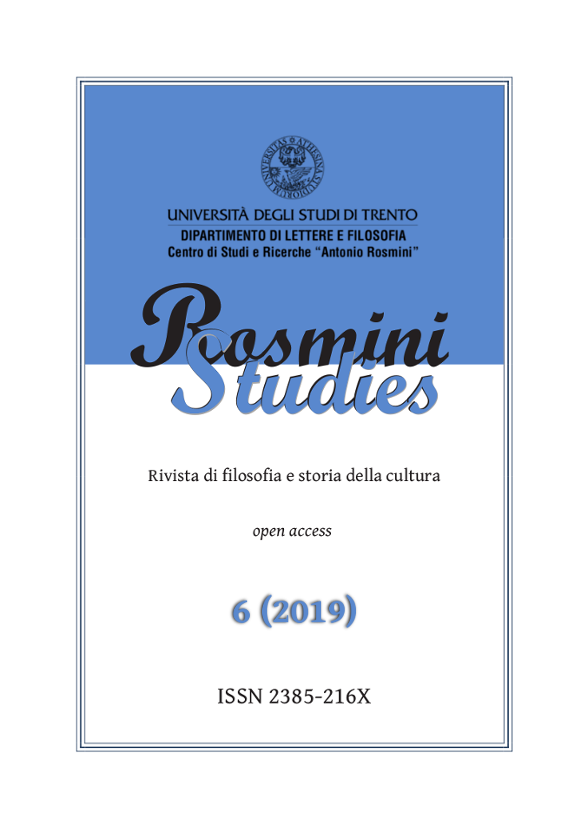The Epistemic Roles of Automata from Cybernetics to Contemporary Robotics
DOI:
https://doi.org/10.15168/2385-216X/182Keywords:
automata, cybernetics, biorobotics, robotic models of biological behaviours, simulations, automi, cibernetica, biorobotica, modelli robotici di comportamenti biologici, simulazioniAbstract
Automata, or robots, have often played a crucial role in the reflection on, and discovery of, the mechanisms underlying the behaviour of living systems. During the first decades of the XX century, automata were invoked to support mechanistic theories about animal behaviour. More recently, robotic models of living systems have been used for predictive and explanatory purposes. This article explores these epistemic uses of robots with historical and contemporary examples.References
G. ALLEN, Mechanism, Vitalism and Organicism in Late Nineteenth and Twentieth-Century Biology: The Importance of Historical Context, in «Studies in History and Philosophy of Science Part C: Studies in History and Philosophy of Biological and Biomedical Sciences», 36, 2, 2005, pp. 261–283.
V. BRAITENBERG, Vehicles. Experiments in Synthetic Psychology, The MIT Press, Cambridge, MA 1986.
M. CIANCHETTI, M. CALISTI, L. MARGHERI, M. KUBA, C. LASCHI, Bioinspired Locomotion and Grasping in Water: The Soft Eight-Arm OCTOPUS Robot, in «Bioinspiration and Biomimetics», 10, 3, 2015.
R. CORDESCHI, The Discovery of the Artificial. Behavior, Mind and Machines Before and Beyond Cybernetics, Springer Netherlands, Dordrecht, 2002
E.DATTERI, Intelligenza Artificiale e Scienza Della Natura, in P. PECERE (ed.), Il Libro Della Natura. II. Scienze e Filosofia Da Einstein Alle Neuroscienze Contemporanee, Carocci, Roma 2015, pp. 180–208.
R. DESCARTES, Il Discorso Del Metodo, in B. WIDMAR (ed.), Opere Filosofiche, UTET, pp. 132–185.
P. DUMOUCHEL, L. DAMIANO, Living with Robots, Harvard University Press, Cambridge, MA 2017.
F GRASSO, T. CONSI, D. MOUNTAIN, J. ATEMA, Biomimetic Robot Lobster Performs Chemo-Orientation in Turbulence Using a Pair of Spatially Separated Sensors: Progress and Challenges, in «Robotics and Autonomous Systems», 30, 1–2, 2000, pp. 115–31.
W. GREY WALTER, An Imitation of Life, in «Scientific American», 182, 5, 1950, pp. 42–45.
R.G. KRUEGER, C.L. HULL, An Electro-Chemical Parallel to the Conditioned Reflex, in «Journal of General Psychology», 5, 1931, pp. 262–69.
C.L. MORGAN, Animal Automatism and Consciousness, in «The Monist», 7, 1, 1896, pp. 1–18.
J. LOEB, Comparative Physiology of the Brain and Comparative Psychology, G.P. Putman’s Sons, New York, 1900.
J. LONG, Darwin’s Devices. What Evolving Robots Can Teach Us About the History of Life and the Future of Technology, Basic Books, New York, 2012.
R. PFEIFER, M. LUNGARELLA, F. IIDA, Self-Organization, Embodiment, and Biologically
Inspired Robotics, in «Science», 318, 2009, pp. 1088-1093.
A. ROSENBLUETH, N. WIENER, J. BIGELOW, Behavior, Purpose and Teleology, in «Philosophy of Science», 10, 1, 1943, pp. 18-24.
T. ROSS, Machines That Think, in «Scientific American», 89, Aprile 1933, pp. 206–8.
E.R. TRUITT, Medieval Robots. Mechanism, Magic, Nature, and Art, University or Pennsylvania Press, Philadelphia, PA 2016.



